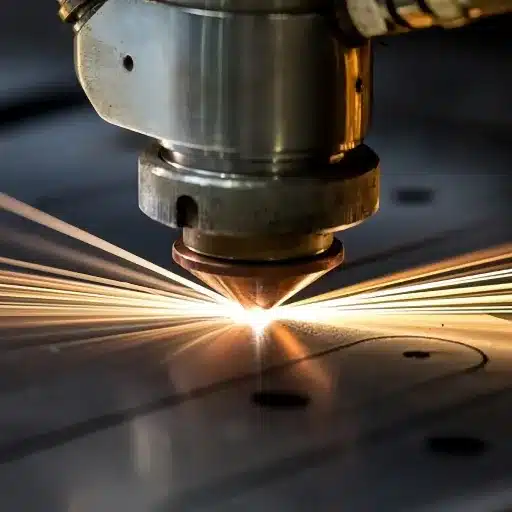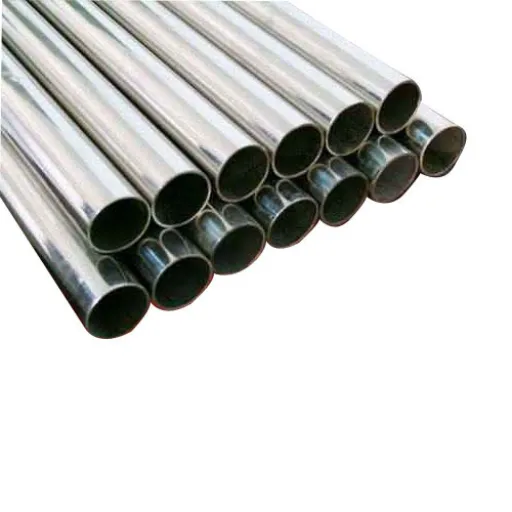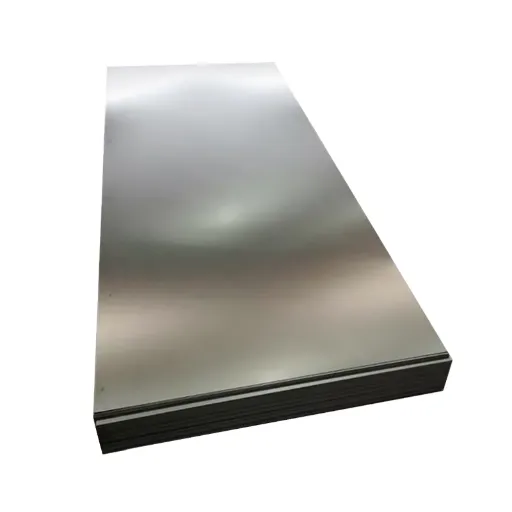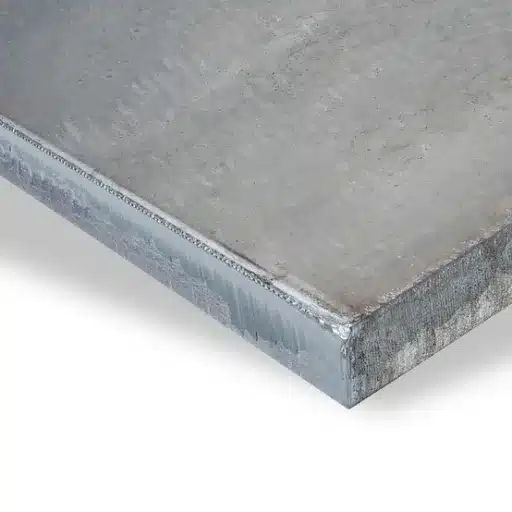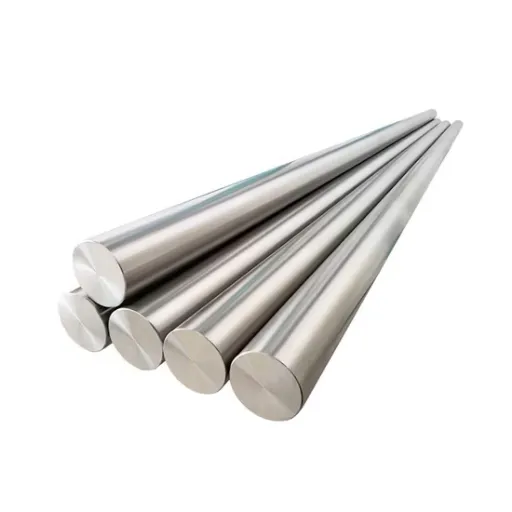Cutting sheet metal made of stainless steel and steel can really be a hard and difficult task if you have no knowledge of the right ways especially if it is the first time you are going to do it. Knowing the best way and the right tools for the job will make getting the clean and precise results a lot easier regardless if you are a do-it-yourself hobbyist, professional fabricator, or just trying to improve your home. The discussion here is on the methods that will let you cut both kinds of metals neatly and without hassle while at the same time avoiding the rigors and difficulties that are generally associated with cutting. Traditional tools and modern equipment are some of the options that we will be looking at and which will also help us determine the best approach for your project based on its size and complexity. Continue reading to find out the secrets and professional tips that will make the cutting process easy and quick for you.
Understanding Stainless Steel Properties

Characteristics of Thick Stainless Steel
Thick stainless steel is generally defined as sheets or plates that are more than 5mm thick. These materials have very special traits that render them perfect for a wide range of industrial use. Thick stainless steel’s high tensile strength and durability are factors that allow the material to endure stress and pressure in large quantities and that is the reason it is widely used in harsh equipment, construction, and manufacturing. One such main functional property is corrosion inefficiency that can be attributed to the presence of chromium which creates a layer on the surface that slows down the rusting reaction.
Moreover, thick stainless steel can endure a wide temperature range without changing its performance which is a great advantage in the production of high-temperature applications like heat exchangers and pressure vessels. The weight and inflexibility of stainless steel are mainly attributed to its approximate density of 7.9 g/cm³. On the contrary, this same density factor may pose cutting and shaping of thick stainless steel to be a hard task needing the use of specialized tools like plasma cutters, waterjet systems, or laser cutting equipment in order to achieve the accurate results.
Uses of Stainless Steel Sheets
Building and Design
Stainless steel sheets find their way into most if not all modern buildings and infrastructure. These are used for various purposes such as coverings, roofs, fences, and load-bearing parts because they will not rot even when subjected to harsh climate conditions for a long time. For instance, grade 316 stainless steel, highly resistant to pitting, is the material of choice for areas near the ocean and places with high moisture content.
Food Processing and Catering
The food and beverage industry considers stainless steel sheets as the main material for construction of the surfaces that must be hygienic and non-reactive. They are found in kitchens (equipment, countertops), tanks for storage, and machinery for food processing. Grades 304 and 316 are particularly popular in this sector because they can be easily cleaned and are safe for food contact.
Medical and Pharmaceutical Equipment
The surface of stainless steel is non-porous, easy-to-clean and thus it is of great necessity in medical and pharmaceutical applications. Surgical instruments, tools, and hospital furniture are some of the items made with stainless steel of surgical-grade 420 or 316L which offers not only strength but also resistance to frequent sterilization.
Essential Tools for Cutting Stainless Steel

Angle Grinder: A Versatile Tool
An angle grinder is considered a very powerful tool that can do a variety of things such as cutting, grinding, and polishing stainless steel sheets. This tool has a rapidly spinning disc that allows it to work with different thicknesses of stainless steel very accurately and without any difficulties. The speed of an angle grinder is usually from 10,000 to 12,000 RPM, which is why it is such an effective tool for cutting even duplex stainless steel.
Discs play an important role when cutting stainless steel, so it is very important to choose the right one. The metal-cutting discs which consist of aluminum oxide or carbide are the best for making clean and quick cuts. As an example, a common 4.5-inch cutting disc works well with sheet sizes that are typically cut, while larger discs that are 7 or 9 inches in diameter may be used where thicker materials are involved.
Circular Saw for Stainless Steel Cutting
When adopting the right blade and settings, a circular saw is yet another powerful tool that can effectively cut stainless steel. With its remarkable capability of handling various metal cutting applications from stainless steel sheets to thick slabs, a circular saw is marked as an oven of versatility and precision. The use of special blades for cutting metal made from carbide-tipped is mandatory when it comes to stainless steel. Such blades are characterized by being long-lasting and offering precision cutting that comes with the downside of overheating and wear that standard blades suffer.
The cleanliness and accuracy of the results when using a circular saw for cutting stainless steel, depend highly on the proper setup of the saw. Blade speed should be lowered to the minimum RPM to reduce the friction and heat formation that can end up warping or damaging the material. A research study suggests that around 800-1,500 RPM is the range of cutting speeds that are most efficient for cutting stainless steel with carbide-tipped blades. Moreover, it is advised to use a cutting lubricant as a heat controller since it will not only reduce heat generation but also extend the blade’s life and the quality of the cut.
2 Ways to Cut Stainless Steel Sheet

Using a Jigsaw for Thin Sheets
A jigsaw, a multi-functional tool, can easily cut intricate or curved patterns in thin stainless steel sheets. However, a thickness of 3mm is still the maximum recommended for such a process due to its accuracy as well as the workability of the cuts made. A jigsaw fitted with a fine-toothed, bi-metal blade that is meant for metal cutting can very well produce clean cuts at a slow to moderate speed so as to avoid the creation of excessive heat.
In order to get the best cuts from the process, it is so important to hold the stainless steel sheet down tightly with clamps in order to limit the bouncing of the sheet during the cutting process. Application of a lubricant like cutting oil will also help to lessen friction, lower the temperature and lengthen the life of the blade as well. One of the common recommendations is to use blades containing at least 21 teeth per inch (TPI), since this tooth count is ideal for the thin metal working area.
Using a Band Saw for Precision
A band saw is the most reliable cutting tool when precision is considered among the various metals, currently this tool can be found mainly in the professional and industrial applications. Jigsaw is good for intricate curves and small projects while a band saw would be perfect only for straight, smooth cuts especially where the metal is thick or large. It is the nature of the blade’s continuous loop that there is uniform cutting action, which subsequently leads to the minimization of jagged edges and material wastage.
Very often the modern band saws come with such advanced features as variable speed for the blade and automatic feed. An example of a high-quality band saw is one that can run at a speed range of 100 to 3,000 feet per minute, therefore and so on, being able to satisfy the different materials by their respective needs. It is reported that using a bi-metal blade made for cutting stainless steel can enhance the blade’s durability up to 50% more than the usual carbon steel blades.
Step-by-Step Cutting Process for Thick Stainless Steel

Preparing Your Workspace
Workspace preparation is very important for the cutting methods like water jet cutting to produce optimum results. Start by cutting off the area from where you want to do the cutting. Removing all the dirt, dust, or any other materials from the area will also help to keep the process smooth and the material unspoiled. Keeping the stainless steel tight using clamps or fixtures will help to avoid shaking during the cutting process that would reduce the accuracy.
After that, make sure that your water jet cutting machine is calibrated correctly. This includes checking the water pressure, which usually ranges from 50,000 to 90,000 PSI, and making sure that plenty of garnet or other abrasive materials needed for cutting thick stainless steel is supplied. Studies have shown that adding garnet particles to the process increases the cutting efficiency noticeably and, as a result, cleaner and more accurate cuts are obtained.
Measuring and Marking the Cut
Precise measurements along with conspicuous markings are the basis of a good quality cutting process. Start off by taking advantage of professional measuring tools like a steel measuring tape, ruler, or calipers to guarantee complete accuracy. A laser measure is a good option for the very long or large materials if you want to have even more precision. The report from the recent study in the industry indicates that the problems in measurement can lead to wasting the material and increasing project costs – experts say that even a mistake of 1/8″ can make precision machining projects significantly delayed.
When marking the material, pick the right marking tool suitable for the surface. A scribe or chalk is a good choice for metals while a pencil or fine-tip marker may work better for wood or plastics. Make sure all the markings are very clear and paint a good contrast with the surface so they are easy to see during the cutting operations. To make sure there are no mistakes, double-check the measures by following the “measure twice, cut once” principle.
Executing the Cut: Techniques and Tips
Precision cutting is a very important phase that every machining or crafting project must go through and that it always requires skillful techniques in order to obtain the desired results. Before starting, make sure that the material is firmly clamped so that there will be no shifts during the cutting process. Materials that are not tightly held can cause cuts that are not accurate, damage to tools or, even worse, safety hazards. A research conducted in 2023 found out that using the right clamping techniques could improve the accuracy of the cuts by as much as 28%, which is especially true for metalworking projects.
When you are using cutting tools like saws, laser cutters, or CNC machines, always use the correct blade or bit for the material. For thin sheets of metal, fine-tooth blades are more suitable but coarser blades are used for wood. It is also important to keep the right speed; based on the manufacturer’s instructions, a laser cutter should work at a speed of 10-20 mm/s to get cleaner edges on acrylic or plywood.
Safety Precautions When Cutting Metal

Protective Gear and Equipment
Safety Glasses or Goggles
One of the major risks in cutting operations are flying metal fragments. To reduce the risk of eye injuries, OSHA recommends protecting the eyes with safety glasses fitted with side shields or using impact-resistant goggles.
Cut-Resistant Gloves
Metal cutting will put your hands at high risk. Kevlar-like gloves will protect the wearer from cuts and will also allow the wearer to have good finger control.
Hearing Protection
Grinding and sawing machines can produce noise that is more than 85 decibels, which is harmful if one is exposed to it for too long. Earmuffs or ear plugs that offer protection against high sound levels should be used.
Safe Handling of Tools
Inspect Tools Regularly
After the tool has been used, check its condition again. The presence of damaged or worn-out tools, such as hammers with cracks or electrical cords that have been frayed, poses a risk of unexpected failure and thereby an accident. Regular inspections and prompt replacements are important.
Use the Right Tool for the Task
The misuse of tools can cause both injuries and inefficacy. For instance, using a wrench for so long will not only weaken its structure but ultimately lead to breakage as well. Each tool serves a specialist function and should therefore be treated as such.
Keep Tools Organized
An untidy working area is a recipe for disaster. Always store hand tools in their specific places, like in a toolbox or on a wall rack, to avoid causing tripping incidents and to easily access the right tools for the job at hand.
Reference Sources
-
Industrial Metal Service
- Title: Precision in Action: How to Cut Stainless Steel the Right Way
- Why it’s reliable: This source offers professional insights into using power shears and other tools for cutting thicker stainless steel, emphasizing precision and safety.
-
Part Manufacturing Blog
- Title: How to Cut Stainless Steel: 15 Methods & Techniques
- Why it’s reliable: This blog provides a comprehensive guide to various cutting methods, including safety tips and tool recommendations, making it a practical resource for readers.
-
Cold Saw Shop Blog
- Title: 6 Tips for Cutting Stainless Steel Effectively
- Why it’s reliable: This source focuses on effective techniques, equipment selection, and safety measures, ensuring readers can achieve optimal results.
Frequently Asked Questions (FAQs)
What tools are best for cutting thick stainless-steel sheets?
The best tools for cutting thick stainless-steel sheets are an angle grinder, plasma cutter, and circular saw with a steel cutting blade. The tool you choose will depend on the type of cut and finish you need.
How to cut thin stainless steel sheets?
Other options of cutting thin stainless steel sheets are metal shears, jigsaw with a fine-toothed blade, or circular saw with a metal cutting blade. These ways provide clean cuts without any harm to the material.
Is it possible to cut stainless steel without heat?
Stainless steel can be cut without heat generation by water jet cutting or laser cutting. These techniques control heat affected zones effectively and cut very precisely.
What are the best practices for cutting stainless steel?
Always use the right cutting tools and blades for metal when cutting stainless steel. Also, to prevent overheating and to maintain accuracy, steady moving at the line is recommended. Furthermore, having safety equipment is crucial.

